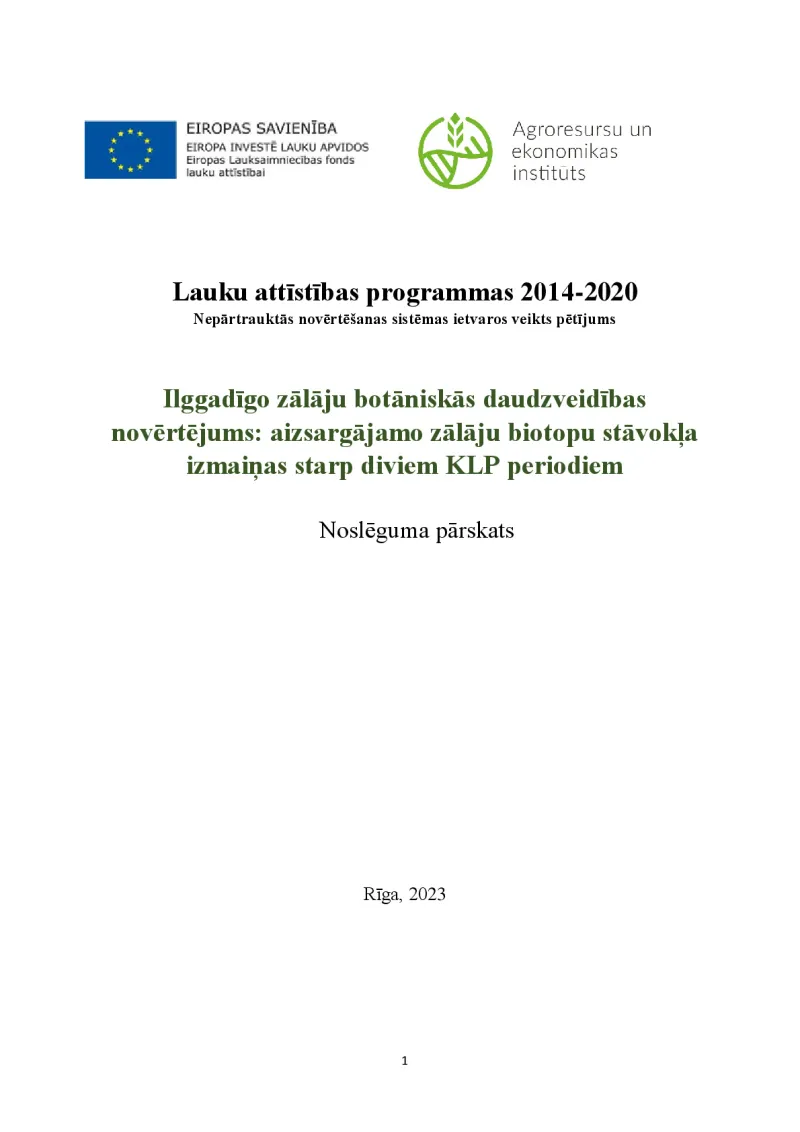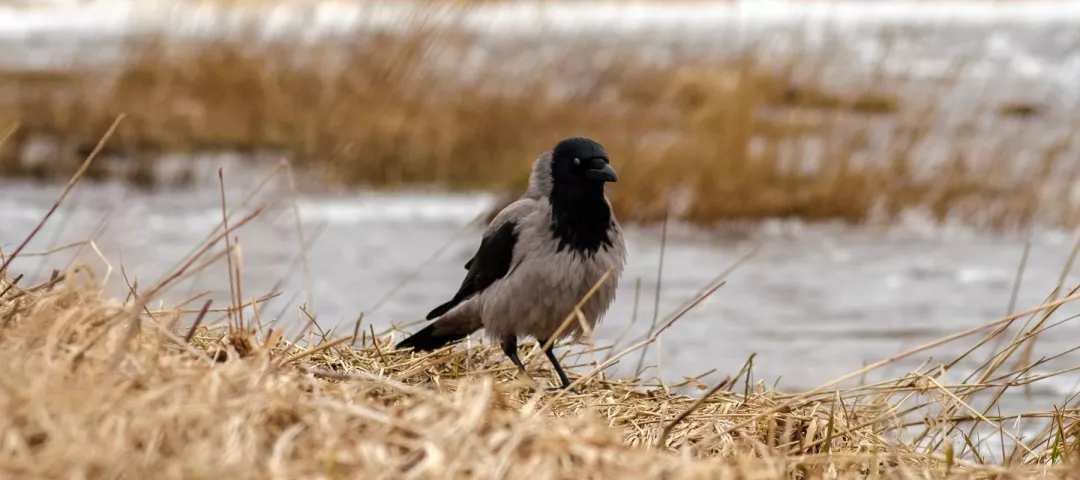Latvian assessment of the botanical diversity in protected grasslands of EU importance
This report evaluates changes in botanical diversity and habitat conditions across two CAP periods, offering insights for enhancing biodiversity conservation and sustainable land management.
- Latvia
- 2014-2022
- Environmental impacts


The final report analyses the changes in the state of botanical diversity of protected grasslands in Latvia over two programming periods: 2007-2013 and 2014-2022. The study assesses the impact of CAP support by analysing direct payments with single area payments (SAPS) and payments for small farmers, as well as rural development support with payments for the activities of organic farming (OF) and maintenance of biodiversity in grasslands (MBG).
The report aims to evaluate how the structure and extent of grassland areas and CAP support types have evolved across these periods, focusing on four evaluation questions:
- How has the structure of support types and the extent of the grassland sample areas established in the first period (2007-2013) changed between the two CAP periods (2007-2013 and 2014-2020)?
- Are there regional differences in the parameters of plant species diversity in protected grasslands between two regions, and what is the impact of grassland area on plant species diversity?
- What is the current state of botanical diversity of inventoried grasslands depending on the type of support received in the second research period?
- What are the changes in botanical diversity (structure and plant species) of protected grasslands between the two CAP periods (2007-2013 and 2014-2020) depending on the Rural Development Programme and direct support types?
The study is based on a repeated inventory assessment conducted in 2013-2014 and 2014-2020. Data from 408 protected grasslands covering 1090 hectares throughout Latvia, excluding the Latgale region, were analysed using descriptive statistics, non-parametric tests and generalised linear models. Data were collected and stored in Excel for structural data, Turboveg for species composition data and a geospatial database for vegetation descriptions. Key findings indicate significant changes in support structures, with 44% of grassland experiencing a change in support type between the two periods. The state of the botanical diversity shows a mixed picture; while grassland structural conditions were generally better, species diversity remained low across most of the grassland area. The MBG supports an improved state of grassland structure compared to grasslands without support. Still, it was not significantly better when compared to grasslands managed with only SAPS (single area payments) or OF (organic farming) support. Over the two CAP periods, there was a slight deterioration in grassland structure, with a 10% increase in areas with insufficient structural conditions. The species diversity showed both improvements and deteriorations. It had improved in nearly 10% of grasslands with poor initial condition. At the same time, the area in which the state of species diversity was good and excellent during the first observation period had decreased by a few per cent. The report highlights that the impact of a specific type of support on the preservation of the botanical diversity of grasslands varies depending on the type of grassland habitats. In floodplain habitats, MBG support significantly improved structural conditions, whereas rare EU importance habitats showed increased litter accumulation.
The findings suggest that while CAP support, in general, has contributed to maintaining the condition of protected grasslands (so that they do not deteriorate), it has not significantly improved them. Therefore, the existing CAP framework needs to be improved, both by fine-tuning the existing conditions and by developing new interventions to be implemented.
Considering the detected changes in botanical diversity influenced by the CAP support, evaluators recommend several improvements to the CAP (2023). For example, they recommend reviewing the support conditions, finding the socioeconomic reasons for the reduction and modifying the current support system for grasslands to address them.
Another recommendation is to introduce result-oriented support interventions while maintaining an action-oriented approach. At the same time, the social-ecological dimension must be strengthened, with the support of the CAP, promoting the formation of stable rural communities, the development of grassland products (including product brands, ecotourism, etc.) and other measures that would promote the inclusion and use of grassland biodiversity as a resource in rural business.
Author(s)
The Institute of Agricultural Resources and Economics (IARE): S.Rūsiņa, A.Namatēva, I.Silamiķele, L.Ieviņa, P.Lokovskis
Resources
Documents
Botanical diversity of permanent grasslands Assessment of the status of protected grassland habitats changes between the two CAP periods
(PDF – 4.69 MB – 67 pages)